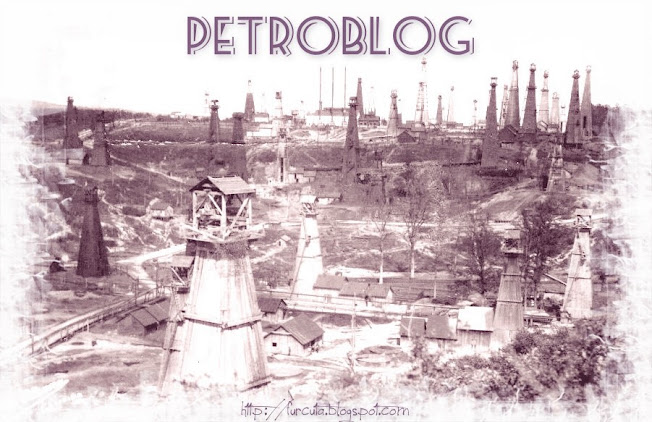Burning petroleum wells at Buzau, during the First World War.
Date : 1916
Rumania entered World War I on the side of the Allies in 1916 and many of the oil installations were destroyed in advance of the invasion of the German armies. Production dropped to 3,721,000 barrels in 1917, but the long familiarity of Steaua Romana's geologists and engineers with the local fields was helpful in enabling the German forces to make effective use of Rumanian oil during the period of their occupation.The number of petroleum geologists in Rumania between 1911 and 1916 is known to have been substantial, but most of their identities and affiliations are obscure. Steaua Romana probably still had the largest technical departments. Astra Romana had acquired the staff of Regatul Roman by merger, and its local organization shared also in the personnel and services of the Central Geological Bureau which Royal Dutch-Shell had established under Erb at The Hague. Several of the important smaller companies had become addicted to the use of geology in earlier years, and several consultants worked in the oil country at various times. The only full-time geologist for Romano Americana before the German occupation was Silas C. Stathers, who had started as a civil engineer for Jersey Standard many y ars earlier and worked here in 1914-1916 before returning to the United States as the first chief geologist of Standard Oil Company of Louisiana. During the summer field season for more than 20 years, Romano Americana employed Ion Popescu-Voitesti, a former student of Mrazec, professor of geology at the universities of Cluj and Bucharest successively, and later director of the Rumanian Geological Survey Restoration of the oil business after the war was hampered for a time by the inflation and political readjustments which were prevalent in Europe, while the character of the industry underwent major changes. Steaua Romana, as a former enemy property, passed front German to local control. Astra Romana resumed large-scale activities, although Royal Dutch-Shell was putting more emphasis on its vast undeveloped holdings in the western hemisphere. Standard of New Jersey, which was pinched for oil supplies everywhere, established a geological department in Romano Americana with E. T. Hancock as chief and 3 to 5 assistants. Their first efforts were devoted to reconditioning old wells and drilling deeper ones on the leases at Moreni and Baicoi, but they could not bring production back to the 914 level (Gibb and Knowlton, 1956). Rumania as a whole was unable to surpass its 1913 production until 1925, but enjoyed unprecedented success during the next 10 years ''.

%2C%2BRomania%2C.png)